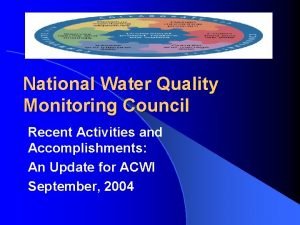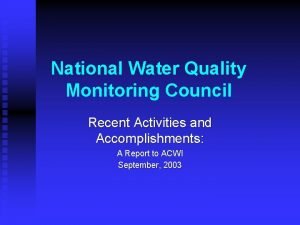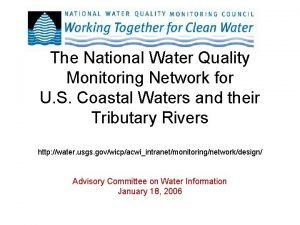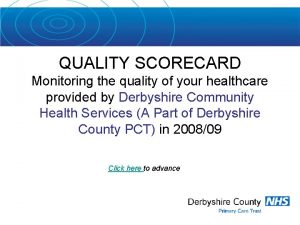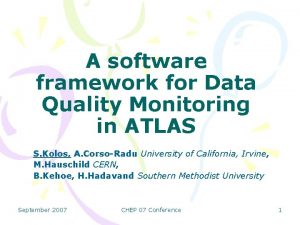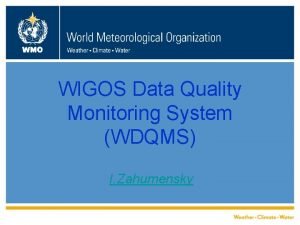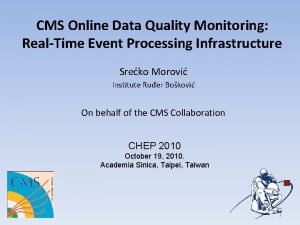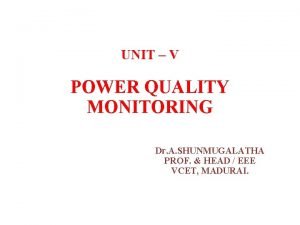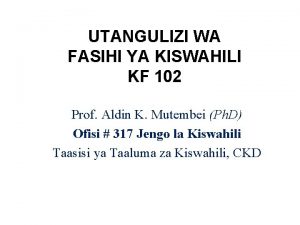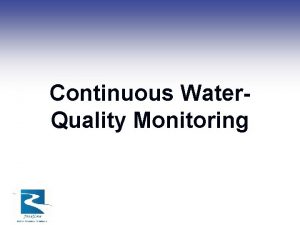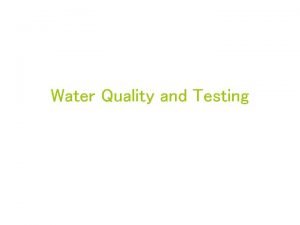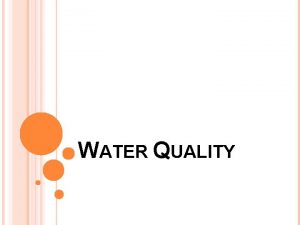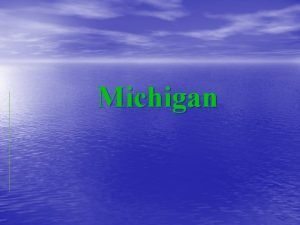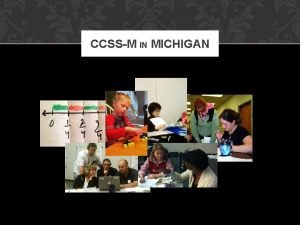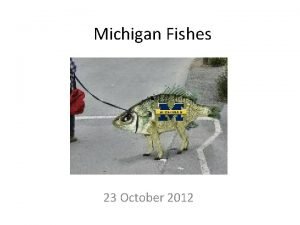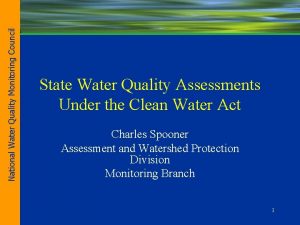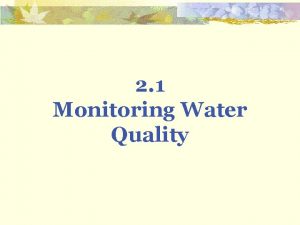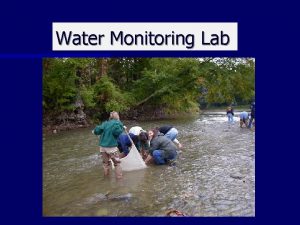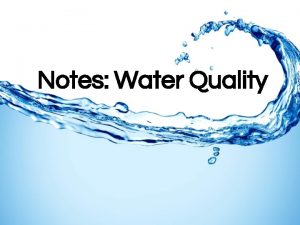Water Quality Monitoring in Michigan 1996 2006 A















- Slides: 15

Water Quality Monitoring in Michigan, 1996 -2006: A Decade of Program Evolution By: Gerald Saalfeld, MI Department of Environmental Quality

Presentation Objectives • Background on Michigan Water Quality Monitoring • Monitoring Strategy Development • Program Evolution From 1996 -2006

Early Monitoring Program Focus Monitoring Objectives • Identify severe problems/violations • Focus on point sources to determine whether MI Water Quality Standards were met Monitoring Activities • Emphasis on chemical monitoring • Acute toxicity testing • Water fixed station network

Monitoring Program Criticisms • Monitoring program reviewed and criticized -State Auditor General -MI Environmental Sciences Board -MI Mercury Pollution Prevention Task Force • Criticism: State unable to determine whether water quality was changing (trend assessment) • Criticism: Monitoring not evolving to address critical issues • State legislation required monitoring strategy development

Monitoring Goals • Assess the current status and condition of individual waterbodies and determine whether MI Water Quality Standards are being met • Measure temporal and spatial water quality trends • Provide data to support DEQ water quality protection programs and evaluate their effectiveness • Detect new and emerging water quality problems

Water Quality Monitoring Strategy - 1997 • Fish Contaminants • Water Chemistry • Sediment Chemistry • Biological Integrity & Physical Habitat • Wildlife Contaminants • Beach Monitoring • Volunteer Monitoring • Inland Lake Quality • Stream Flow

Millions Funding Increase For Water Quality Monitoring Since 1998

Monitoring Strategy Update – 2005 • Required by EPA • Goals are same as 1997, but some shift in emphasis • Expanded objectives • Design modifications • Additional waterbody types • More emphasis on data management/communication • Staff responsibilities and expertise

Program Evolution 1996 -2006 - Goals and Objectives • Increased emphasis on measuring water quality protection program effectiveness - Nonpoint source - Sediment remediation - TMDL development/effectiveness - Concentrated Animal Feeding Operation NPDES permits • Increased emphasis on detecting emerging issues -Chemical: PFOS, PBDEs, MTBE, pharmaceuticals - Biological: invasive species, toxic blue-green algae - Addressed primarily through grants due to specialized knowledge/analytical requirements

Program Evolution 1996 -2006 – Sampling Design • Until recently, monitoring occurred only at fixed stations and targeted sites consistent with the 5 -year rotating watershed cycle • Sampling and analytical improvements were incorporated into the water chemistry sampling at fixed stations - flow stratification - clean sampling techniques - low-level analyses • Probability sampling added to the water fixed station effort in 2005 • Probability sampling incorporated into biological watershed surveys in 2006 • More intensive studies in recent years to document program effectiveness and support TMDL development

Program Evolution 1996 -2006 – Waterbody Types • EPA is encouraging states to assess all waterbody types • Biological assessment has been confined to wadeable streams and rivers • A biological assessment procedure for non-wadeable rivers was developed and tested from 2002 -05. Implementation will begin in 2006 • Nearshore Great Lakes (benthos, zooplankton) • Historically, little wetland quality monitoring occurred in Michigan. A wetland monitoring strategy is being developed, which identifies a tiered monitoring approach to assessing water quality

Program Evolution 1996 -2006 – Data Management & Communication • All water and sediment data are entered into STORET • Biological data will be entered in the future • Internal databases also used to house data – improves ability to analyze and share data • Two searchable databases available to public on DEQ’s web site – beach data and fish contaminant data • Most monitoring reports are available on the DEQ web site • On-line GIS system incorporating all DEQ monitoring data will be available by January 2007

Program Evolution 1996 -2006 – Staff Responsibilities & Expertise • Identify more subtle impacts/trends • Requires more sophisticated study designs and statistical analysis • Grant and contract management • Ability to work with DEQ water protection programs • Identify opportunities to leverage resources with other agencies

Summary • Maintain overall program framework and goals • Flexibility to respond to new questions/issues • Incorporate improved study designs and sampling/analytical methods • Opportunities to expand monitoring to additional waterbody types • Improved data management and communication • Staff required to cooperate with other agencies and leverage resources

Future Challenges • Better data integration across media, watersheds, and agencies • Detection of more subtle temporal and spatial trends • Maintain staff expertise and staff willingness to accept change • Maintain consistent, long-term funding • For more information: Gary Kohlhepp @ kohlhepg@michigan. gov, 517335 -1289 • Web site: www. michigan. gov/deq, click on “Water”, “Water Quality Monitoring”, and “Assessment of Michigan Waters”
 Water and water and water water
Water and water and water water National water quality monitoring conference
National water quality monitoring conference National water quality monitoring council
National water quality monitoring council National water quality monitoring conference
National water quality monitoring conference National water quality monitoring conference
National water quality monitoring conference Quality monitoring scorecard
Quality monitoring scorecard Quality monitoring scorecard
Quality monitoring scorecard Data quality monitoring framework
Data quality monitoring framework Wdqms
Wdqms Real time data quality monitoring
Real time data quality monitoring Permanent power quality monitoring equipment
Permanent power quality monitoring equipment Kitabu cha mulokozi 2017
Kitabu cha mulokozi 2017 Carta di lussemburgo 1996
Carta di lussemburgo 1996 1996 xxxi
1996 xxxi 1996 xxxi
1996 xxxi Married persons equality act 1 of 1996
Married persons equality act 1 of 1996

